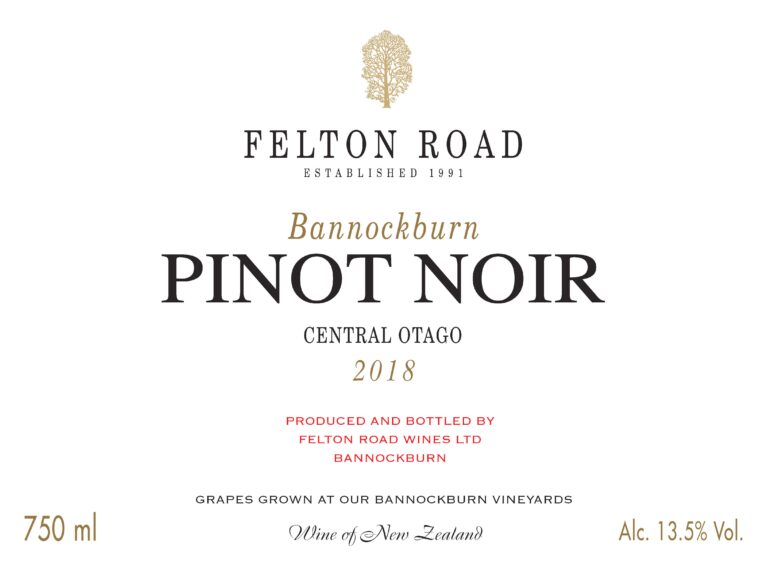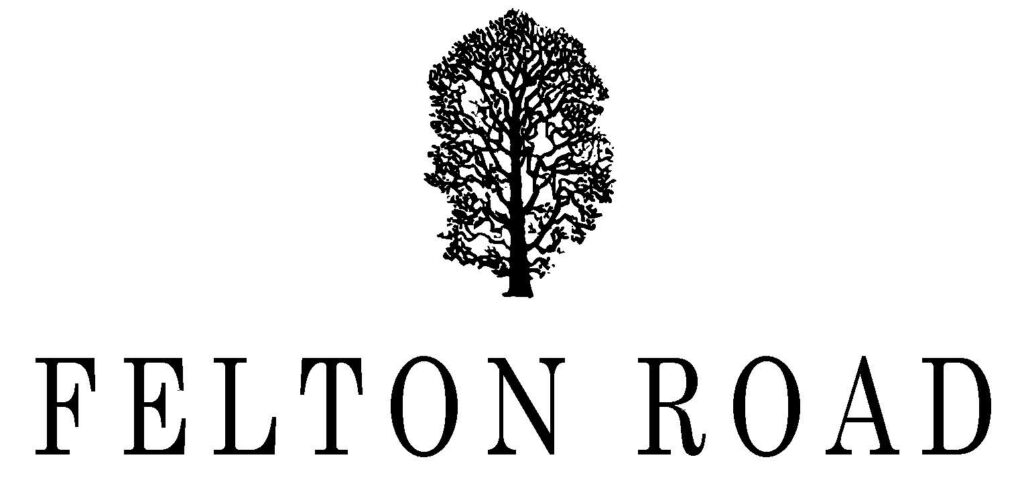Current Release:
Scroll down for more vintages
-

2023 Vintage (4)
-

2022 Vintage (13)
-

2021 Vintage (13)
-

2020 Vintage (11)
-

2019 Vintage (11)
-

2018 Vintage (11)
-

2017 Vintage (11)
-

2016 Vintage (12)
-

2015 Vintage (11)
-

2014 Vintage (10)
-

2013 Vintage (11)
-

2012 Vintage (10)
-

2011 Vintage (12)
-

2010 Vintage (10)
-

2009 Vintage (11)
-

2008 Vintage (11)
-

2007 Vintage (10)
-

2006 Vintage (11)
-

2005 Vintage (7)
-

2004 Vintage (9)
-

2003 Vintage (10)
-

2002 Vintage (8)
-

2001 Vintage (9)
-

2000 Vintage (7)
-

1999 Vintage (8)
-

1998 Vintage (6)
-

1997 Vintage (6)

2018 Pinot Noir Bannockburn
Characteristic floral, cherry and spice aromas abound from the glass on first approach. The fruit from our four vineyards (Elms, MacMuir, Calvert and Cornish Point) delivers appealing diversity of aroma and flavour, along with multiple layers and textures. The deeply textural mouthfeel is silken and already charmingly approachable: partly due to the warm 2018 season, but also highly typical of the Felton Road house style.
Vintage Summary 2018
Growing Season & Vintage Conditions
WINTER: After August offered hints of an early spring, the first half of September slipped back towards cooler conditions. Our cherry-plum tree at The Elms vineyard was in full blossom by early September. On September 25, when after three straight days of warm, strong north-westerlies, a rainy night of heavy thunderstorms seemed to call an official opening on the season. Unseasonably warm temperatures both day and night provided a rapid and exceptionally even budburst.
OCTOBER: Following an early budburst on September 20, October was the warmest on record and very dry.Rapid shoot growth was not held back by the strong springtime winds that we can normally receive during this period.
NOVEMBER: Warmest on record. Flowering occurred at the end of the month with vines already receiving their first trim. Some dryer areas, particularly those with free draining soils showed symptoms of the hot and dry conditions. Clay like silts at our Calvert vineyard appeared to ride out the unusual weather.
DECEMBER: Warmest on record along with the earliest completion of flowering and a solid fruit set necessitating a green harvest across almost all of the vineyards and varieties. There was close to zero rainfall for the month of December.
JANUARY: Warmest on record and again virtually no rainfall. Veraison had commenced in most blocks by mid to late January. Temperatures were high enough to cause some stalling of the vines development, a decelerating trend that would be accentuated by the weather that followed.
FEBRUARY: The hot temperatures finally abated on the first day of February when a southerly blast resulted in snow low on the hills and a morning temperature of only 4°C: a far cry from the 38 °C just 3 days previously. Relative to the record breaking months preceding it, February was also wet: rainfall was three times higher than the long term average. The cooling of air and soil along with the moisture was not unwelcome in a season of extraordinarily rapid development.
MARCH: The cooler finish fortunately allayed our concerns for the potential style and quality of the wines and allowed for a measured and orderly harvest period. Harvesting began very early on February 28 and was complete by March 20, except for the Block 1 Riesling on March 29. Due to the very dry conditions previously, the wet February did not cause any issues with disease. The fruit was in exceptional condition with surprisingly normal chemistry and flavours.
Select a variety from the page tabs at the top or choose another vintage from the dropdown

2018 Pinot Noir Bannockburn
Characteristic floral, cherry and spice aromas abound from the glass on first approach. The fruit from our four vineyards (Elms, MacMuir, Calvert and Cornish Point) delivers appealing diversity of aroma and flavour, along with multiple layers and textures. The deeply textural mouthfeel is silken and already charmingly approachable: partly due to the warm 2018 season, but also highly typical of the Felton Road house style.
Vintage Summary 2018
Growing Season & Vintage Conditions
WINTER: After August offered hints of an early spring, the first half of September slipped back towards cooler conditions. Our cherry-plum tree at The Elms vineyard was in full blossom by early September. On September 25, when after three straight days of warm, strong north-westerlies, a rainy night of heavy thunderstorms seemed to call an official opening on the season. Unseasonably warm temperatures both day and night provided a rapid and exceptionally even budburst.
OCTOBER: Following an early budburst on September 20, October was the warmest on record and very dry.Rapid shoot growth was not held back by the strong springtime winds that we can normally receive during this period.
NOVEMBER: Warmest on record. Flowering occurred at the end of the month with vines already receiving their first trim. Some dryer areas, particularly those with free draining soils showed symptoms of the hot and dry conditions. Clay like silts at our Calvert vineyard appeared to ride out the unusual weather.
DECEMBER: Warmest on record along with the earliest completion of flowering and a solid fruit set necessitating a green harvest across almost all of the vineyards and varieties. There was close to zero rainfall for the month of December.
JANUARY: Warmest on record and again virtually no rainfall. Veraison had commenced in most blocks by mid to late January. Temperatures were high enough to cause some stalling of the vines development, a decelerating trend that would be accentuated by the weather that followed.
FEBRUARY: The hot temperatures finally abated on the first day of February when a southerly blast resulted in snow low on the hills and a morning temperature of only 4°C: a far cry from the 38 °C just 3 days previously. Relative to the record breaking months preceding it, February was also wet: rainfall was three times higher than the long term average. The cooling of air and soil along with the moisture was not unwelcome in a season of extraordinarily rapid development.
MARCH: The cooler finish fortunately allayed our concerns for the potential style and quality of the wines and allowed for a measured and orderly harvest period. Harvesting began very early on February 28 and was complete by March 20, except for the Block 1 Riesling on March 29. Due to the very dry conditions previously, the wet February did not cause any issues with disease. The fruit was in exceptional condition with surprisingly normal chemistry and flavours.





